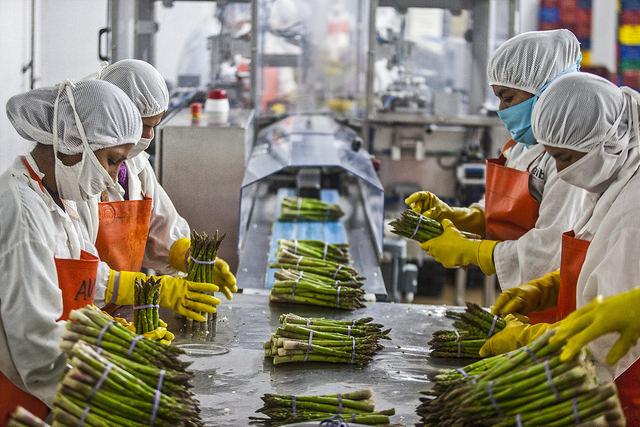To counter the COVID-19 recession, we need to invest in food systems

The COVID-19 pandemic delivered terrible shocks to the food industry.
But international cooperation overcame initial protectionist measures in the global food trade.
The international community now needs to build more resilient regional food systems post-COVID-19.
At the onset of the crisis, food supply chains were strained as many countries imposed restrictions on movement of goods and people across and within borders. As a result, the challenge was not availability of food but easy access to it.
Next, anxious over the uncertainties linked to food supply, some countries restricted food exports, making this situation even more challenging.
These protectionist measures were partly introduced to avoid rising food prices domestically as weakened national currencies made it more advantageous for food producers to export rather than sell at home. The resulting food price inflation could have had significant consequences – making poverty worse and leading to social and political unrest.
Fortunately, excessive protectionism was avoided and many of the initially imposed restrictions have been removed with countries adopting overall a restrained and reasonable approach.
This is something, we at the Food and Agriculture Organisation of the United Nations (FAO) and the European Bank for Reconstruction and Development (EBRD) commend countries for. We also recognise the enormous role played by the Agriculture Market Information Systems (AMIS) in providing timely information on stocks and production levels.
Food export restrictions raised concerns about the global trading environment. The likely global domino effect of retaliatory restrictions could lead to a spike in food prices, such as the one observed around 2008. Food export restrictions could also be an excuse for more general protectionism, which could hinder recovery from the crisis. International organisations like ours need to be alert and active to stop this from happening in the near future.
That said, while avoiding excessive protectionism is a good thing, it is not enough to stimulate the economy and make food supply chains more resilient.
So what else should happen?
First, countries – especially in regions such as the southern and eastern Mediterranean, Sub-Saharan Africa, and Central Asia – could boost the resilience of their food system through better regional integration of agricultural markets. This opportunity remains vastly underexploited to date. Such integration would allow countries to diversify their export and import markets and create opportunities for moving to higher value-added activities.
Eliminating trade restrictions is especially important for Africa because the region can make up for the slumping export demand from Europe and elsewhere. The African Continental Free Trade Agreement is key to this. However, success will require countries to eliminate costly non-tariff measures that have been a major barrier to the region’s trade.
For example, Nigeria can produce fertilisers for the entire continent, but non-tariff barriers make it impossible to ship them to other African countries. As a result, most of it is shipped to Latin America. In Central Asia, different countries are moving at different speeds towards market openness, however, the process is slow.
Second, when food is not safe, people cannot be healthy and thrive, and unsafe food cannot be traded on the international marketplace. Foodborne hazards do not respect national borders. Foodborne diseases can spread with the movement of food, animals and people. It is essential therefore that food safety standards are put in place across Africa to take advantage of the opportunities of intra-regional trade.
Third, investing in countries’ resilience against future disruptions of global food trade will also help promote the sector’s sustainability and cut its carbon footprint. The closure of borders and the limitation of domestic trade has led to considerable waste of fresh food such as fruits, vegetables, meat, and dairy – at a significant cost. At the same time, the increase in the cost of transportation and shipping has led many developing countries to struggle with their exports while others have been, in some instances, priced out of key export routes.
The conclusion is simple: accelerate the transition of regional food systems towards more resilient and sustainable models, including low-carbon solutions and more diversified production and supplies. Digital agricultural solutions can help make this happen.
The EBRD’s and the FAO’s joint work – be that exploring ways to incorporate circular economy aspects and limit food losses and waste in the retail sector or assessing carbon neutrality for the agri-food sector – has shown how these steps can be taken as well as the value they add to a more resilient global food system post-COVID-19.
Article by:
Máximo Torero Assistant Director-General, Economic and Social Development Department, Food and Agriculture Organization of the United Nations (FAO)
Beata Javorcik Chief Economist, European Bank for Reconstruction and Development (EBRD)
This article first appeared on The World Economic Forum COVID Action Platform 31 Jul 2020 here
